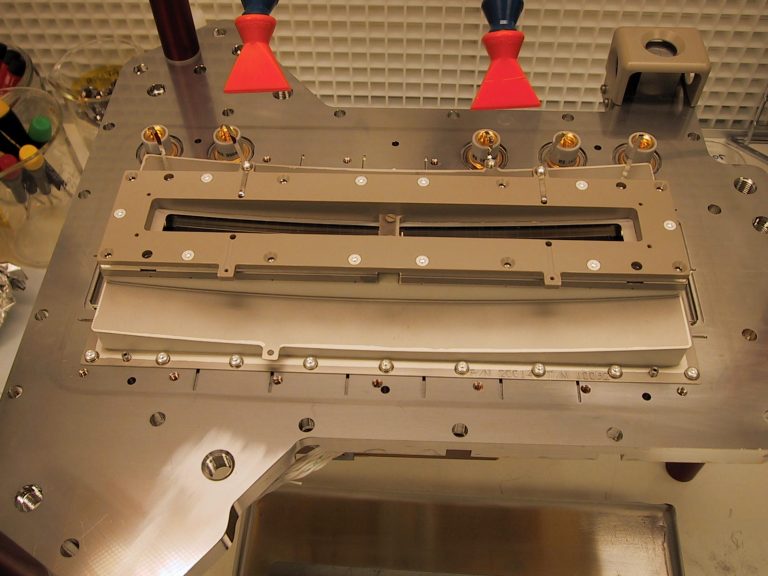For every telescope that focuses light, you need a detector to catch and detect the light. Researchers at SSL design and build state-of-the-art microchannel plate detectors (MCPs) based detectors that can sense light ranging from optical wavelengths all the way down to X-rays. MCPs can also be used to detect particles: electrons, protons, and neutrons.
Here at SSL, we design and build many types of MCP detectors and the electronics that read them out. MCPs developed at SSL are part of the Hubble space telescope and many other major telescopes. If you multiply the number of detectors built here by the number of years they have been operating, we have more than 200 detector years in space. MCP technology has been around for decades, and the microchannels themselves have changed little. However, the electronics have improved by a factor of about 10,000. The goal is to create large detectors with very sharp resolution, low noise, and high quantum efficiency. We can now detect the position where a photon lands within about 20 microns, and we can measure the time of arrival of the photon down to about 100 picoseconds.
Currently, SSL researchers are working to develop the detectors of the future for NASA’s next generation space telescope, called LUVOIR (Large Ultraviolet Optical Infrared Telescope). Once its design is finalized, this telescope may have a reflecting mirror as big as 15 meters across. Large telescopes require large area detectors. Our researchers are working to scale UV and optical detectors up to 100 millimeters, and ultimately 200 millimeters—these will be the largest MCP detectors ever built, made to measure the photons collected by the largest space telescope ever built.
